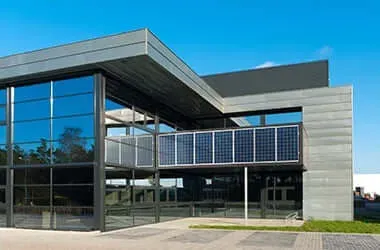3 Kilowatt Solar Inverter for Efficient Renewable Energy Solutions
Understanding 3 Kilowatt Solar Inverters A Comprehensive Overview
As the world increasingly turns toward renewable energy sources, solar power is taking center stage. Among the various components that make solar energy systems functional and efficient, solar inverters play a critical role. In this article, we will explore the importance of a 3 kilowatt (kW) solar inverter, how it operates, its advantages, and considerations for selecting the right one for your solar energy system.
What is a Solar Inverter?
A solar inverter is an essential device that converts the direct current (DC) electricity generated by solar panels into alternating current (AC) electricity, which can be used to power household devices or fed into the electricity grid. The inverter is often referred to as the heart of a solar energy system because it not only converts energy but also monitors system performance and improves energy efficiency.
Why 3 Kilowatt?
A 3 kW inverter is commonly chosen for residential applications as it can efficiently manage the energy demands of an average household. In many regions, a system of this size can produce sufficient electricity to power essential appliances, lighting, and more, depending on the sunlight exposure and energy consumption patterns.
Typically, a 3 kW solar inverter can handle solar panels producing approximately 12 to 15 panels, but this can vary based on panel output. Understanding the specifics of your household's energy requirements and the local climate will help determine if a 3 kW inverter is the right choice for your system.
How Does a 3 kW Solar Inverter Work?
The basic working principle of a 3 kW solar inverter remains consistent across different models. When sunlight hits the solar panels, they generate DC electricity. The inverter then performs the crucial task of converting this DC electricity into AC electricity. This AC electricity can then either be used immediately in your home or sent back to the grid if your system is grid-tied.
Modern solar inverters are equipped with advanced technology that allows for maximum power point tracking (MPPT). MPPT is a method used to maximize the amount of electricity generated by the solar panels by adjusting the electrical operating point of the modules. In essence, this technology allows the inverter to continuously optimize energy production based on varying sunlight conditions, increasing overall efficiency.
Advantages of a 3 kW Solar Inverter
1. Cost-Effectiveness A 3 kW inverter strikes a balance between size and cost, making it an economical choice for many households. Smaller systems have lower initial investment costs, making solar energy more accessible.
solar inverter 3 kilowatt

3. Environmental Impact Solar energy is a clean and renewable resource that reduces greenhouse gas emissions. By using a solar inverter, homeowners contribute to sustainability efforts.
4. Scalability For homeowners who initially install a 3 kW system, there is potential for future upgrades. Additional solar panels can be integrated into the system if energy needs increase.
5. Incentives and Rebates Many regions offer financial incentives for solar installations. A 3 kW system may qualify for tax credits, rebates, or net metering, maximizing the return on investment over time.
Considerations When Choosing a 3 kW Solar Inverter
While a 3 kW inverter may be the right size for many households, there are several factors to consider
- Solar Panel Compatibility Ensure that the inverter is compatible with the solar panels you are considering. Check the voltage, current ratings, and efficiency.
- Type of Inverter You can choose between string inverters, microinverters, and hybrid inverters. String inverters are the most common, while microinverters offer individual panel monitoring.
- Warranty and Lifespan Look for inverters that come with good warranties (often 5 to 10 years) and are known for reliability. An inverter’s lifespan is a crucial factor in overall system performance.
- Installation and Maintenance Professional installation is advisable to ensure optimal performance. Additionally, periodic maintenance will help in identifying any potential issues early on.
Conclusion
A 3 kW solar inverter represents an ideal solution for homeowners seeking to harness solar energy effectively and cost-efficiently. By converting solar energy into usable electricity, these inverters facilitate energy independence and contribute to a sustainable future. As solar technology continues to evolve, a 3 kW inverter stands as a practical choice for many households looking to make the transition to renewable energy.
-
Unlocking Energy Freedom with the Off Grid Solar InverterNewsJun.06,2025
-
Unlock More Solar Power with a High-Efficiency Bifacial Solar PanelNewsJun.06,2025
-
Power Your Future with High-Efficiency Monocrystalline Solar PanelsNewsJun.06,2025
-
Next-Gen Solar Power Starts with Micro Solar InvertersNewsJun.06,2025
-
Harnessing Peak Efficiency with the On Grid Solar InverterNewsJun.06,2025
-
Discover Unmatched Efficiency with the Latest String Solar InverterNewsJun.06,2025







